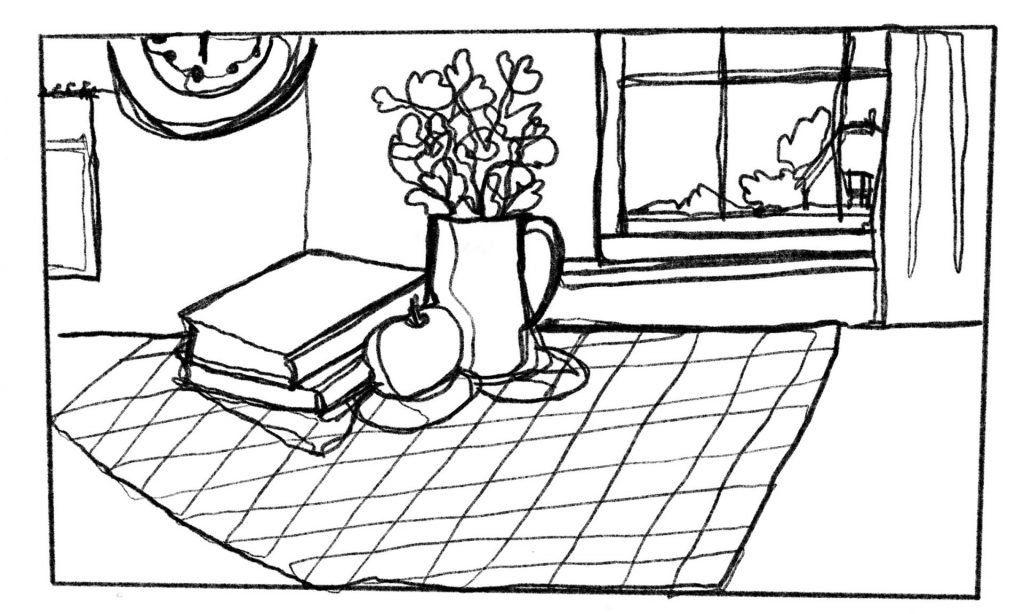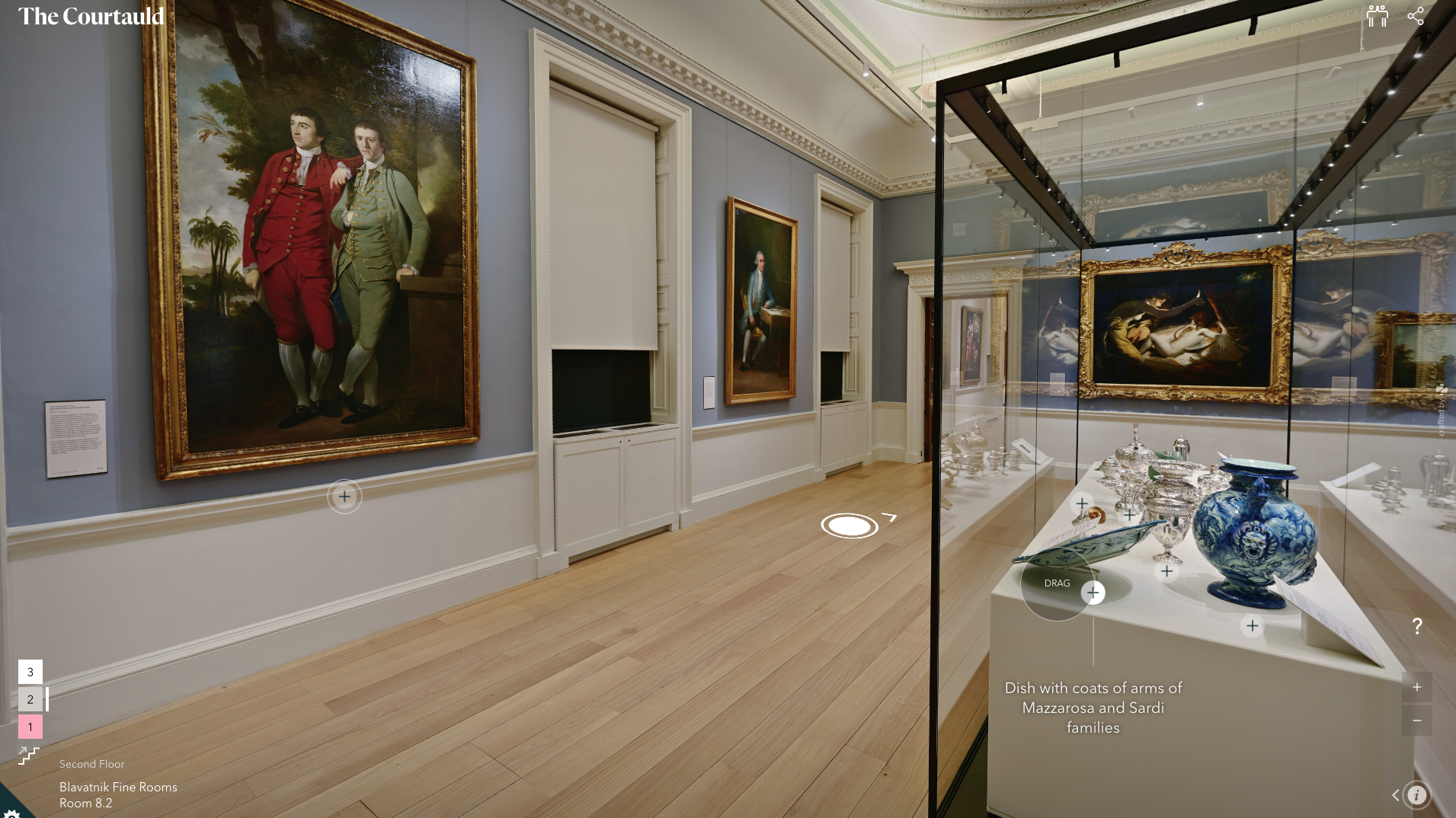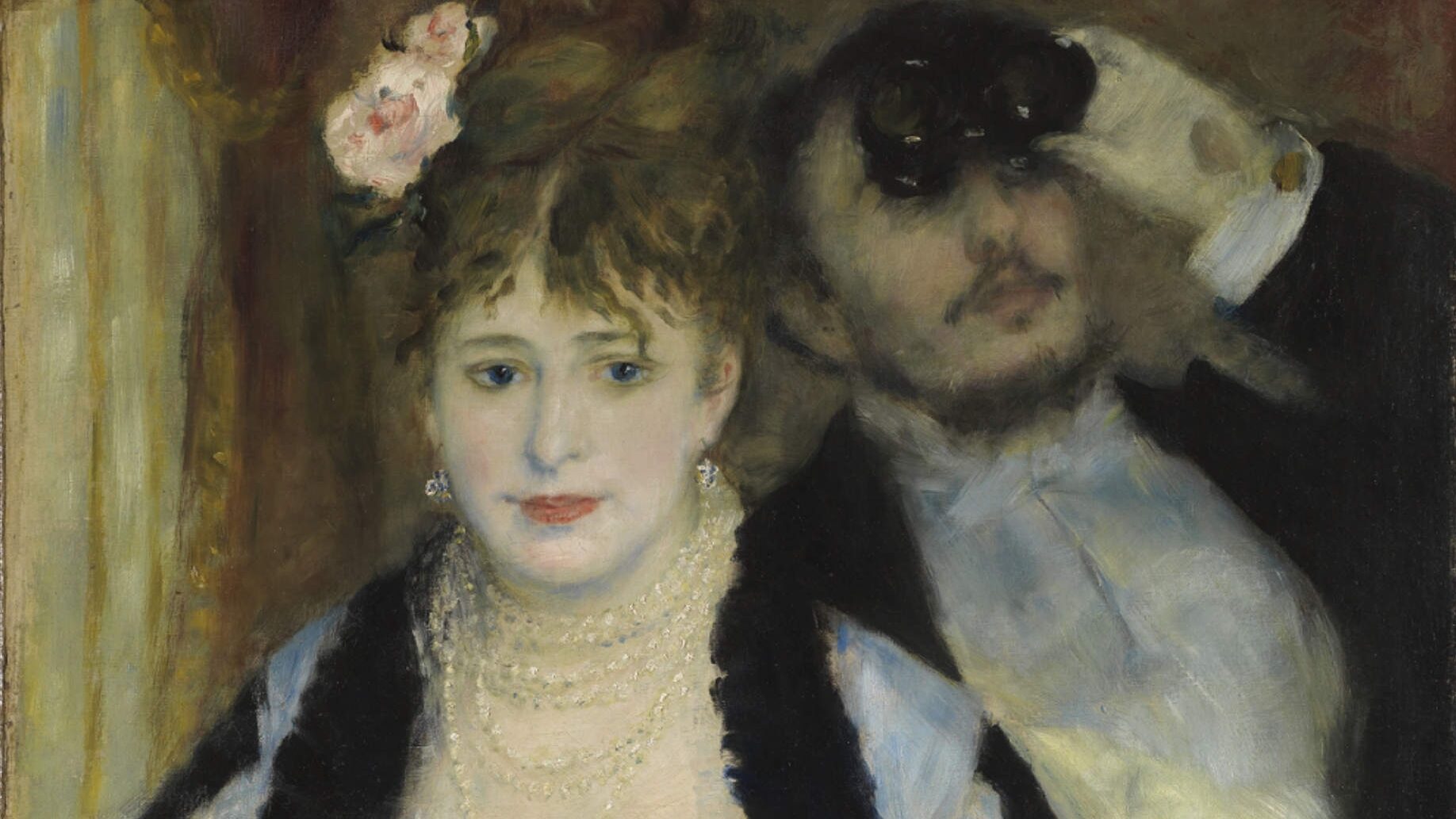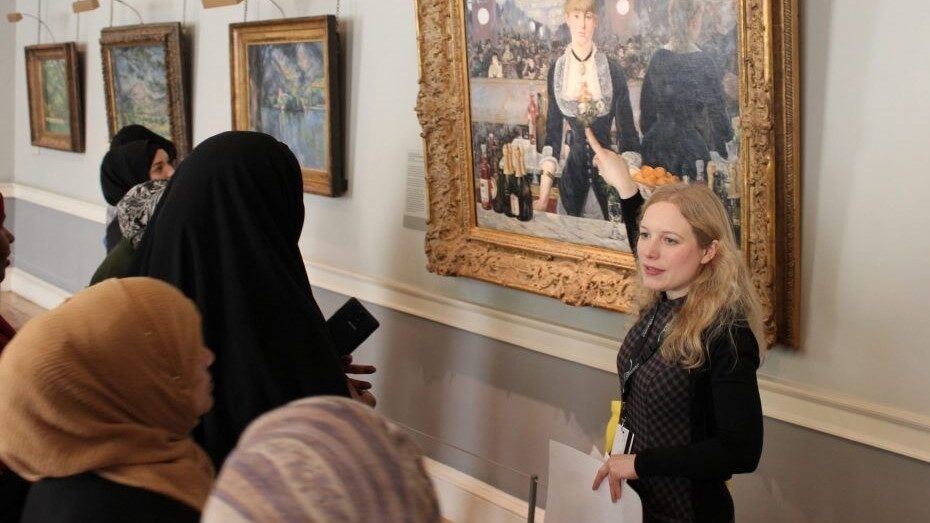Download the PDF version
Cezanne's Still Life Shapes (PDF)
This painting is by an artist called Paul Cezanne (1839 – 1906).
It’s called a Still Life painting. A Still Life picture shows us a collection of things that don’t move, often flowers, fruit and other everyday objects. Cezanne made a lot of Still Life paintings in his studio in Provence, France during his career, where he would arrange and rearrange objects and paint them. These Still Life paintings allowed him to experiment and find new ways of looking at familiar things.
A Closer Look
With someone in your household, use the questions below to take a deeper look into what you can see in the painting and have a discussion about it. These questions are to help you look more closely at the painting and there are no right or wrong answers.
- Do you like this painting?
- What do you see?
- Take a moment to notice everything that you can
- Are these objects indoors or outdoors? How can you tell?
- Look at the fruit. Is all the fruit the same?
- How many different shapes of fruit can you see?
- Which one looks the tastiest?
- Look at the plant. How many different shapes of leaf can you see?
- Look at the shadows. Can you use the shadows to work out where the light is coming from?
- Look closely. Can you see Cezanne’s brush marks?


Materials
- Some everyday objects from your house including something round (e.g. a piece of fruit or a ball), something cylindrical (e.g. a mug or a vase) and something square (e.g. a box or a book) plus anything else you would like to draw. Place your objects next to a window or lamp so light shines on them from one side
- At least 3 sheets of paper
- A pencil
- Scissors
- Glue stick
- 3 coloured pencils or felt tips (optional)
Activity 1 - Warm up Drawing
We are going to try a drawing experiment that will help us look closely at all the different shapes in our Still Life.

- Arrange your objects on the table in front of you.
- Take a pencil and a sheet of paper and put your pencil down in the very middle of your paper – now imagine you can’t take your pencil off the paper and you must make your drawing out of one very long unbroken line.
- Keep your line going around the edge of all the shapes you see. Can you work all the way out to the edge of your paper?
Don’t worry if you run out of objects to draw; keep drawing the table, the room around the Still Life and the background until you have filled up the whole page.
Activity 2 – Drawing Shapes
Cézanne was interested in dividing the world into different shapes like round spheres, long cylinders and angled squares. He believed that if you can draw these shapes then you can draw anything! We are going to have a go at drawing 3 different kinds of shape and use what we learn to draw our Still Life.
Take a new piece of paper and a pencil, coloured pencils or felt tips if you have them. Sit down in front of your Still Life objects.
- Look at your Still Life; take a moment to notice everything you can see in front of you.
- Notice all the different colours you can see; do you have the same colours in your pencils or felt tips?
- Notice where the light is coming from and where the shadows are.
- Look at Cezanne’s Still Life; what colours did he use? Where is the light and shadow in his picture?

Step 1: First we are going to draw our sphere (a perfectly round, 3D circular shape – like a ball). Start by marking out its shape on the paper. Because there are no outlines in real life we are going to start our shapes using the pencil very softly or making little marks at the top, bottom and sides.
Step 2: Next we are going to draw our lightest shadow. If you are just using pencil try gently shading with the pencil on its side. If you are using colour pick your lighest one and draw where you see shadow on your sphere. If you have any shine or bright spots of light on your sphere you can leave these blank.
Step 3: To give our sphere a rounded shape we are then going to add our medium shadows; these are the places where the light and shadow meet on the sphere. You can use your pencil shading very gently or you can choose a lighter colour. Look closely at your Still Life – the shapes might surprise you!
Step 4: Finally we are going to add our darkest shadows. You can build up layers of pencil shading to make it darker or choose your darkest colour. Make sure to include any shadows underneath the sphere too.
Well done! You have drawn your first shape!

Step 5: Next we are going to try drawing a cylinder; start by very lightly marking out the edges of the shape and then adding your 3 shades of shadow. Because a cylinder is rounded like the sphere it might have shadows on both sides.
Step 6: Next is our square or angled shape; because these shapes have sharp edges and corners they often also have sharper shadows. Just like before find the edges of the shape and mark them in, then find the light, medium and dark shadows.
Now you have drawn three different kinds of shape! Take another look at your Still Life; are there shapes that are more complicated? Do you think you can use your shape drawing skills to draw them too? Every Still Life is different, just like every drawing is different, so pay close attention to what you can see in front of you and be proud that your drawing is completely unique!

We’d love to see your Cezanne inspired Still Lifes. Please share your artworks with us (and let us know your name and age)
Twitter: @TheCourtauld
Facebook : The Courtauld
Instagram: @Courtauld



